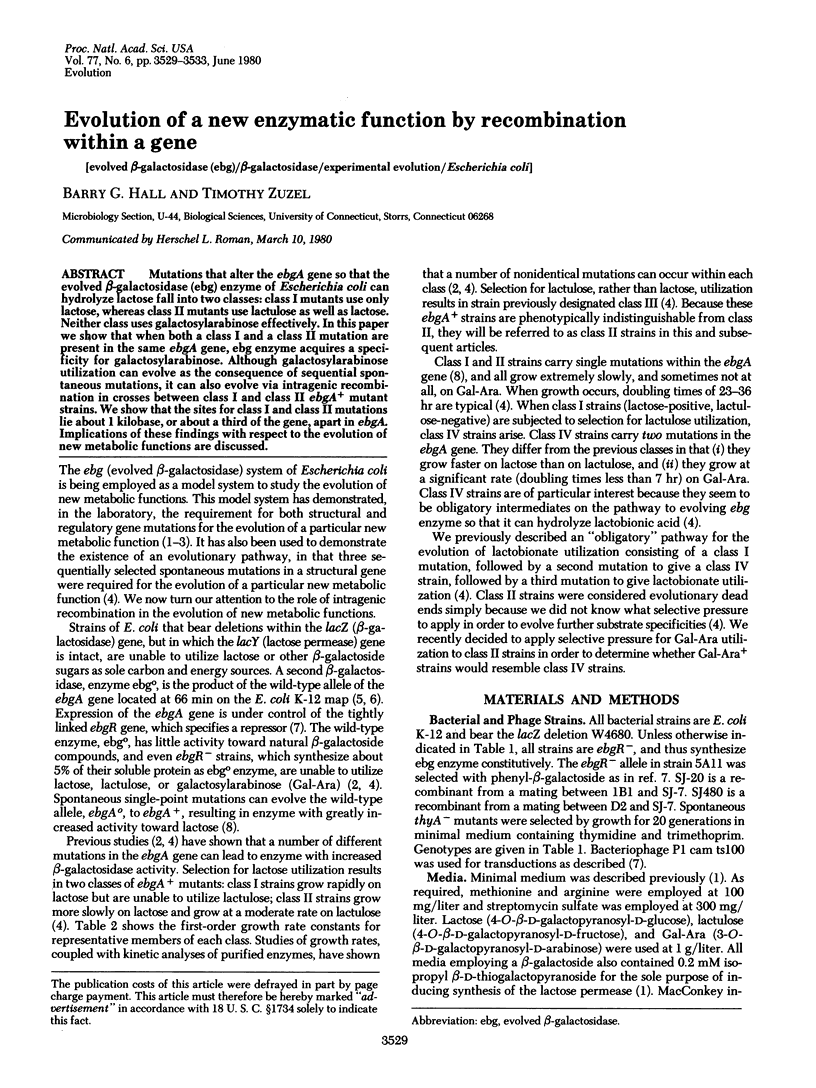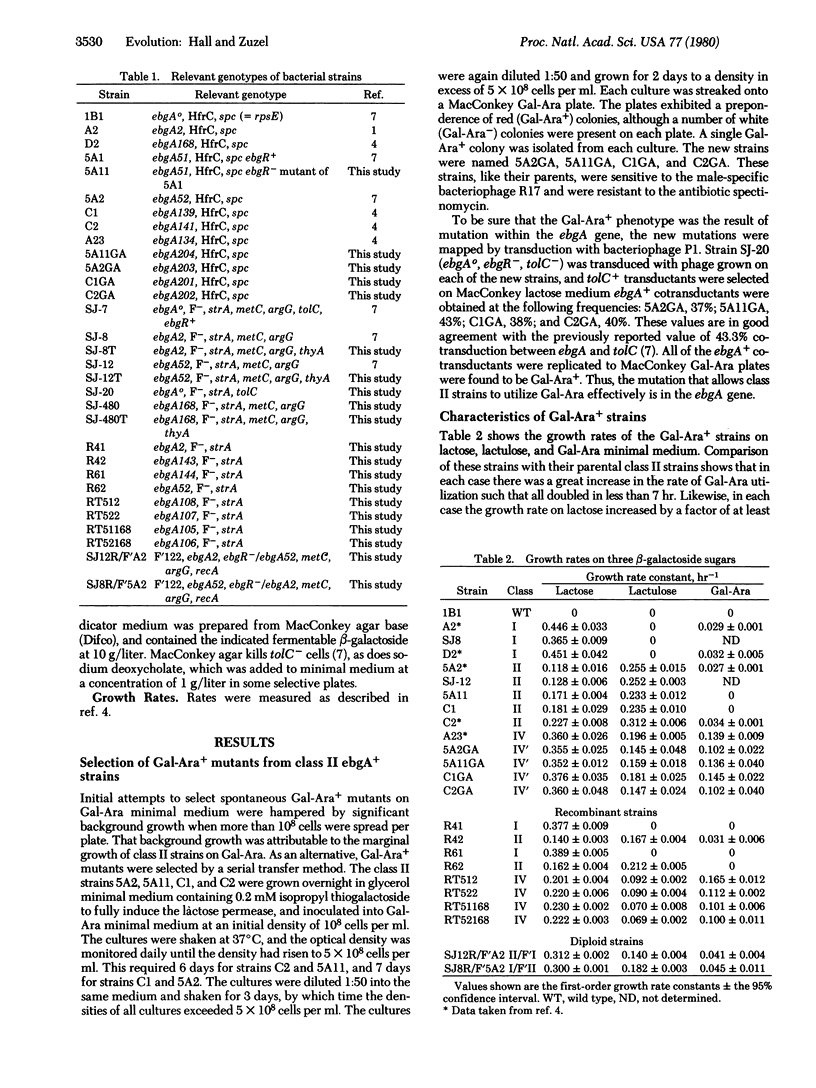Abstract
Mutations that alter the ebgA gene so that the evolved beta-galactosidase (ebg) enzyme of Escherichia coli can hydrolyze lactose fall into two classes: class I mutants use only lactose, whereas class II mutants use lactulose as well as lactose. Neither class uses galactosylarabinose effectively. In this paper we show that when both a class I and a class II mutation are present in the same ebgA gene, ebg enzyme acquires a specificity for galactosylarabinose. Although galactosylarbinose utilization can evolve as the consequence of sequential spontaneous mutations, it can also evolve via intragenic recombination in crosses between class I and class II ebgA+ mutant strains. We show that the sites for class I and class II mutations lie about 1 kilobase, or about a third of the gene, apart in ebgA. Implications of these findings with respect to the evolution of new metabolic functions discussed.
Full text
PDF




Selected References
These references are in PubMed. This may not be the complete list of references from this article.
- Bachmann B. J., Low K. B., Taylor A. L. Recalibrated linkage map of Escherichia coli K-12. Bacteriol Rev. 1976 Mar;40(1):116–167. doi: 10.1128/br.40.1.116-167.1976. [DOI] [PMC free article] [PubMed] [Google Scholar]
- Gall B. G., Hartl D. L. Regulation of newly evolved enzymes. II. The ebg repressor. Genetics. 1975 Nov;81(3):427–435. doi: 10.1093/genetics/81.3.427. [DOI] [PMC free article] [PubMed] [Google Scholar]
- Hall B. G., Clarke N. D. Regulation of newly evolved enzymes. III Evolution of the ebg repressor during selection for enhanced lactase activity. Genetics. 1977 Feb;85(2):193–201. doi: 10.1093/genetics/85.2.193. [DOI] [PMC free article] [PubMed] [Google Scholar]
- Hall B. G. Experimental evolution of a new enzymatic function. II. Evolution of multiple functions for ebg enzyme in E. coli. Genetics. 1978 Jul;89(3):453–465. doi: 10.1093/genetics/89.3.453. [DOI] [PMC free article] [PubMed] [Google Scholar]
- Hall B. G. Experimental evolution of a new enzymatic function. Kinetic analysis of the ancestral (ebg) and evolved (ebg) enzymes. J Mol Biol. 1976 Oct 15;107(1):71–84. doi: 10.1016/s0022-2836(76)80018-6. [DOI] [PubMed] [Google Scholar]
- Hall B. G., Hartl D. L. Regulation of newly evolved enzymes. I. Selection of a novel lactase regulated by lactose in Escherichia coli. Genetics. 1974 Mar;76(3):391–400. doi: 10.1093/genetics/76.3.391. [DOI] [PMC free article] [PubMed] [Google Scholar]
- Hall B. G. Number of mutations required to evolve a new lactase function in Escherichia coli. J Bacteriol. 1977 Jan;129(1):540–543. doi: 10.1128/jb.129.1.540-543.1977. [DOI] [PMC free article] [PubMed] [Google Scholar]
- Hartl D. L., Hall B. G. Second naturally occurring beta-galactosidase in E. coli. Nature. 1974 Mar 8;248(5444):152–153. doi: 10.1038/248152a0. [DOI] [PubMed] [Google Scholar]


